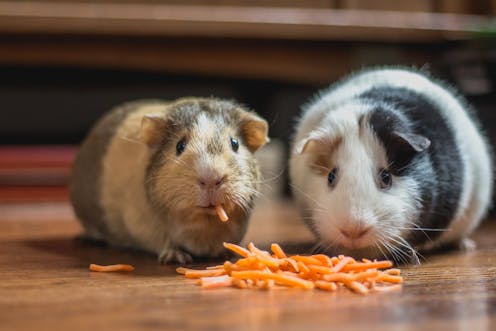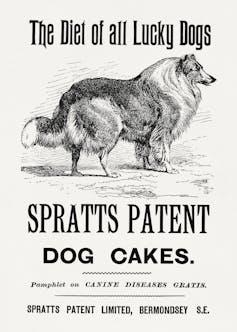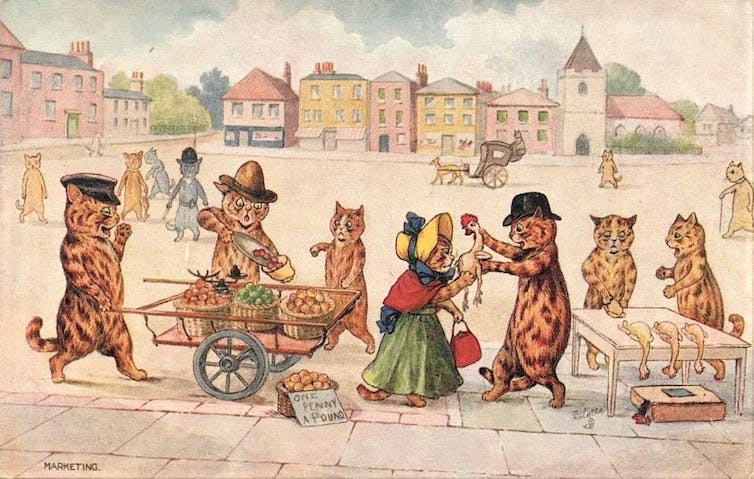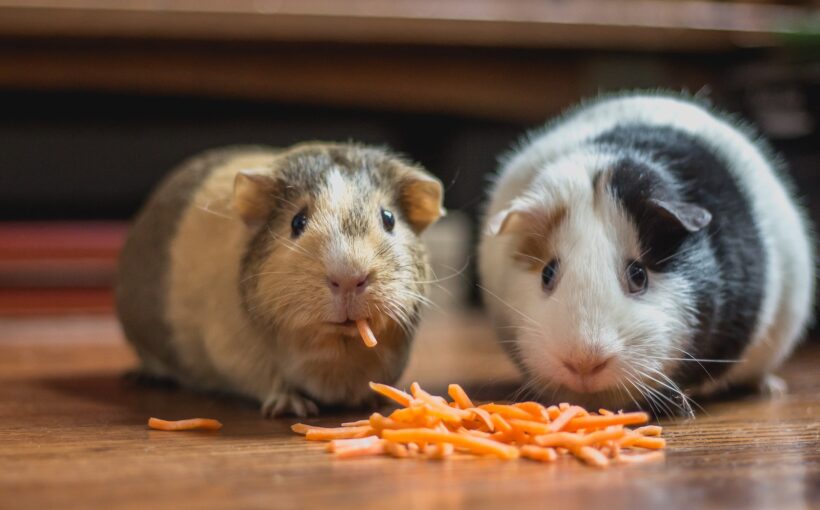
Ever since domestic companion animals first became popular in the west, people’s ability to provide for their healthcare needs has been closely linked to their own economic situation. In October 2022, the British animal charity, the RSPCA, reported a massive 31% drop from 2019 in so-called “rescue” animals being rehomed from its centres. At the same time, the number of animals being surrendered was increasing. Between 2021 and 2022, there was a 11.9% rise in the number of dogs relinquished by their owners and rescued by the charity.
The RSPCA’s animal kindness index for 2023 shows that 81% of pet owners were worried about the increased costs of pet care. Up from 68% in 2022, this is a direct consequence, the charity says, of the cost of living crisis. The rising costs of pet food (32% increase for dog food in April 2023) outstripped inflation at the time (8%), leading to 23% of pet owners expressing concern about being able to feed their pets.
The report also highlights that, in April 2023, there were 45,000 internet searches for “Can I give my pet paracetamol?”, an increase of 13%, compared to April 2022. The British government has since launched a review of veterinary services in the UK, over concerns that pet owners face prohibitively high costs for animal healthcare.
Our research looks at how and why human and pet lives have become entangled in the UK. People, of course, have invested emotionally in animals for thousands of years. But, as we show in our recent book, Pet Revolution:
Animals and the Making of Modern British Life, it was in the 19th century that larger numbers of people in Britain (and other western countries) had the financial resources to keep pets.

The emergence of pet keeping
Victorian culture celebrated the advent of the companion animal. British artists including Edwin Landseer and Briton Riviere painted cats and dogs. King Edward VII commissioned Maud Alice Earl to do portraits of his favourite pooches. And the commercial artist Louis Wain garnered broad popularity for his anthropomorphic illustrations of wide-eyed cats.
Countless contemporaneous novels – with characters including Rochester’s dog Pilot in Charlotte Bronte’s Jane Eyre, Count Fosco’s pet mice in Wilkie Collins’s The Woman in White and the children’s story, Peeps into Petland – show how central pet ownership became to domestic life. This led to new markets emerging.
With vets, at the time, mainly concerned with horses and farm animals, pet owners were encouraged to treat animals themselves. There was a boom in instructional literature on how to care for cats, dogs, wild birds, squirrels and hedgehogs. Prolific pet health advisor Gordon Stables argued, in his 1876 book, The Domestic Cat, that cat owners should take scalpels into their own hands. “Cats,” he wrote, “stand operations of all sorts well.”

By the 1890s, pet-food manufacturer Spratts was selling dog treatments including cooling powders, cough pills, ear-canker lotion and worm powders. It also marketed “Canarydyne” for asthmatic canaries.
From the late 19th century, vets started to cater to pets, largely targeting the elite owners of pedigree animals. In 1884, the London Royal Canine and Feline Surgery proudly advertised its wares in the Kennel Club Show Catalogue. The advert features a long list of international royalty who had consulted the surgery.
Unequal access to animal healthcare
As veterinary treatment for pets became widespread, however, inequalities quickly emerged. Poorer pet owners continued to rely on home remedies. This sometimes meant watching helplessly as a much-loved pet died in agony.
While recognising the potential for exploiting a growing market, vets were mindful of this inequality in accessing animal healthcare. From 1879, the Royal College of Veterinary Surgeons in London ran free clinics for animals of the poor.
In 1900, the Blue Cross animal welfare charity, known at the time as Our Dumb Friends League, made grants available for poorer people to access treatment and seven years later, opened a National Animal Hospital in London. By 1921, this clinic employed three dedicated veterinary surgeons, treating an estimated 10,000 animals a year.

In early 1900s Liverpool, meanwhile, the RSPCA launched a scheme distributing grants for veterinary treatment. In 1917, it opened the first provincial animal hospital. By 1920, the hospital had moved to a larger site and by 1930, two further hospitals had opened across the city.
The People’s Dispensary for Sick Animals launched in London’s East End in 1917. It would go on to treat an estimated 1 million British pets a year by the mid-1930s. And in 1925, the Dogs Trust inaugurated canine clinics, making grants to poorer pet owners that guaranteed the charity would cover veterinary bills.
By the mid-20th century, veterinary care for pets was widely established. Increasingly complex treatments were available. Those who could afford it faced the new dilemma of how much they would pay to save their pets. Distressed over the condition of her increasingly immobile Alsatian, Dinah, London-based diarist Florence Turtle wrote in 1957 that she paid £9 for specialist treatment.
Turtle reflected that she would not have spent that much money on herself. Indeed, £9 for her was the equivalent of around £180 today, a sum most working-class families simply could not have afforded.
Today, spending on veterinary and other pet services totaled £5.3 billion in 2022. By 2026, gross written premiums for UK pet insurance is currently projected to reach £1.9 billion, a rise driven partly by increasing medical and pharmaceutical costs.
The RSPCA is clear that the cost of living is one of the greatest threats to animal welfare. Addressing unaffordable animal healthcare costs is vital to ensure owners are not, as the charity puts it, “only one unexpected bill away” from having to give up their pets.
![]()
Julie-Marie Strange received funding from the Arts and Humanities Research Council for this research.
Jane Hamlett receives funding from the Arts and Humanities Research Council



